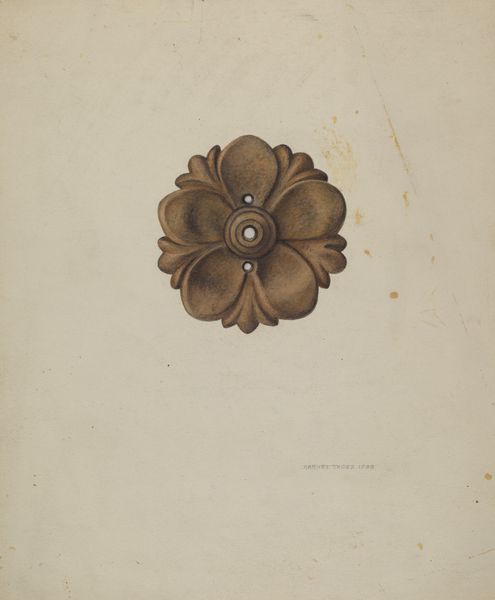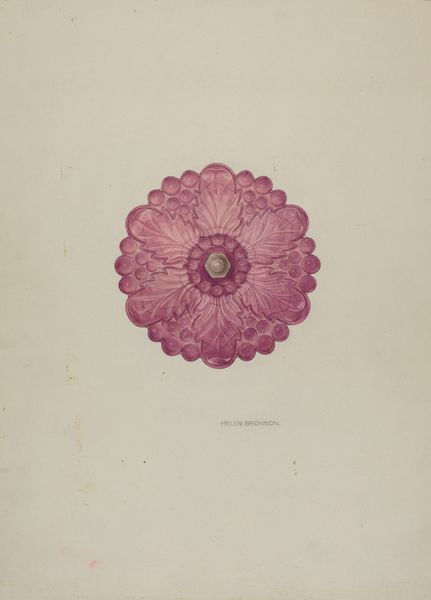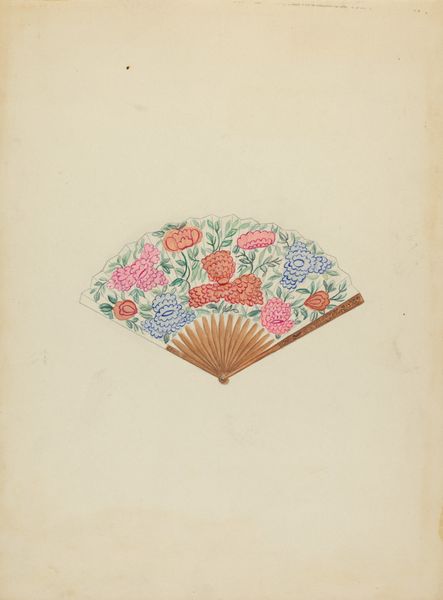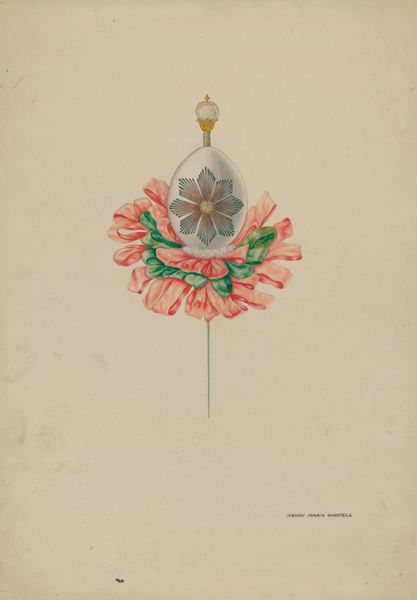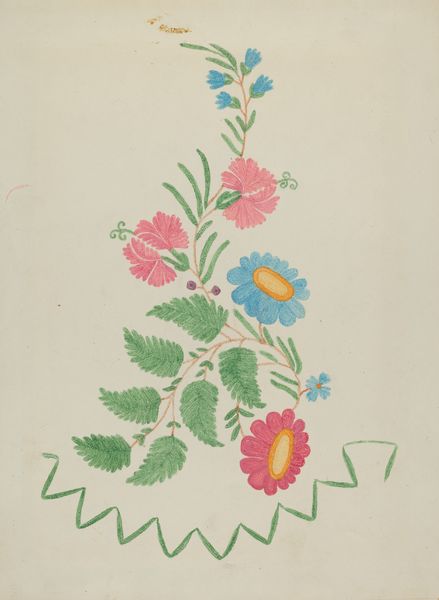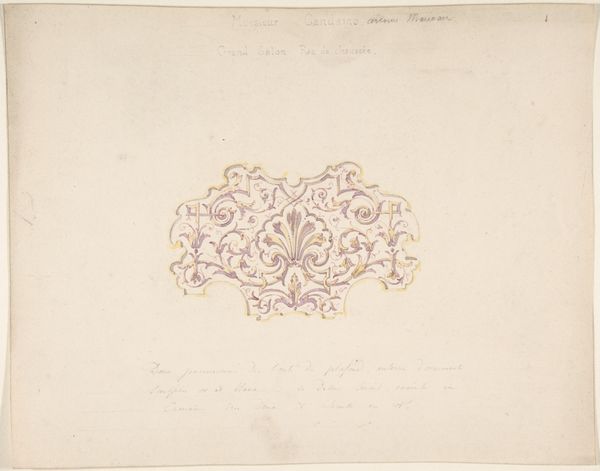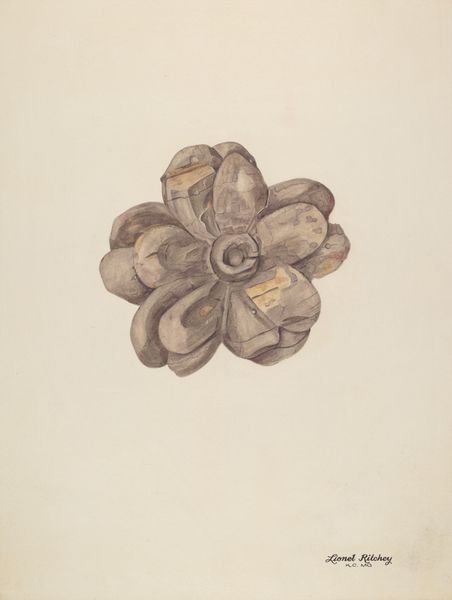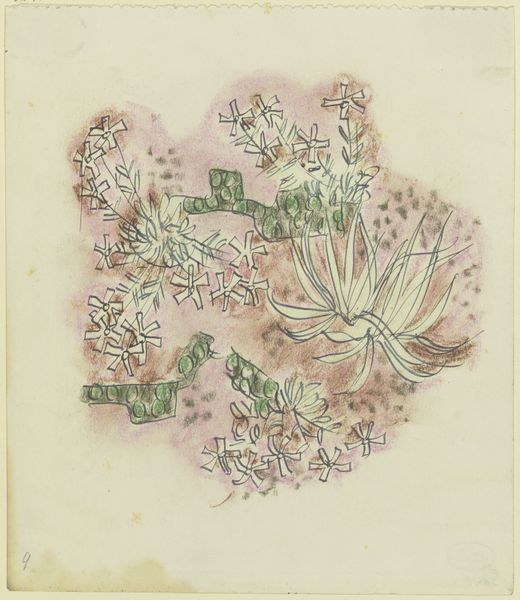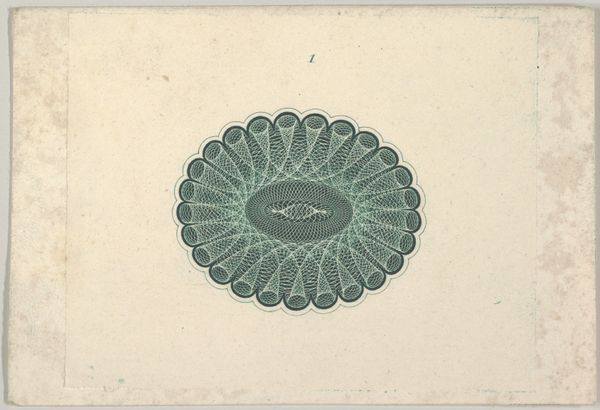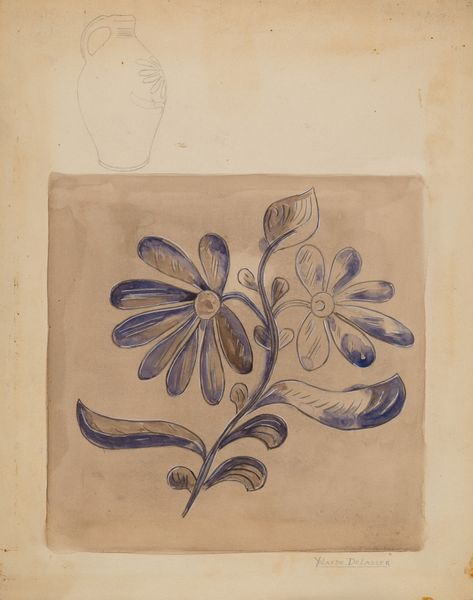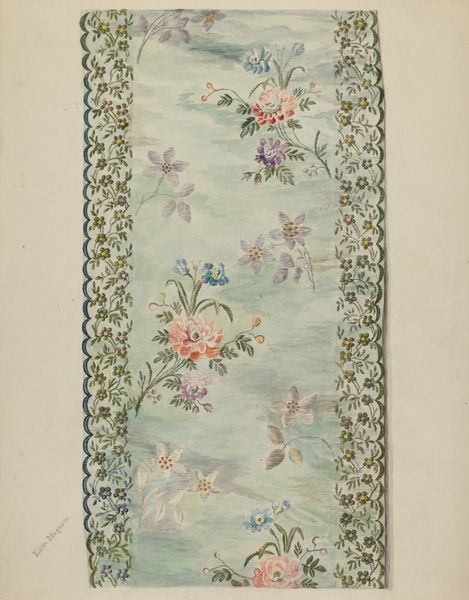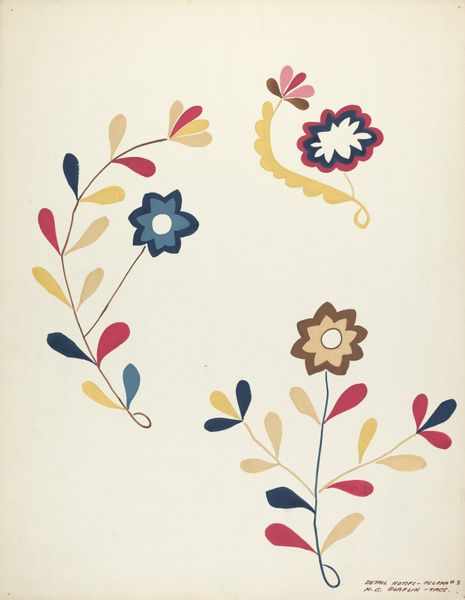
drawing, coloured-pencil, paper
#
drawing
#
coloured-pencil
#
paper
#
coloured pencil
Dimensions: overall: 35.7 x 24.2 cm (14 1/16 x 9 1/2 in.) Original IAD Object: 4 1/2" in diameter
Copyright: National Gallery of Art: CC0 1.0
Curator: What a fascinating find! We're looking at a piece called "Tie-back" created around 1939 by Henry Moran. It’s a colored pencil drawing on paper. What strikes you first about it? Editor: Honestly, it looks like a rather opulent daisy from an alien royal garden. The iridescent sheen, the repetitive circular motifs—it feels otherworldly and decorative. Curator: The floral rosette form certainly evokes the decorative arts, doesn't it? Floral patterns, specifically rosettes, are potent symbols often linked with notions of cyclical time, cosmic order, and even divine radiance across different cultures. Consider their use in ancient Egyptian art and architecture, for example. Editor: It makes me think about adornment, that very human drive to embellish. Do you think there's a statement being made by showcasing an object so overtly…pretty? Is it critiquing a certain kind of taste? Curator: Potentially. There is that fine line between beauty and excess. The very title, "Tie-back", hints at function controlling form; perhaps suggesting restraints or structures that beauty imposes on itself or is imposed upon. The controlled palette of pearly whites, blues, and muted golds adds another layer of refinement to its otherwise somewhat quirky floral shape. It whispers 'restrained luxury'. Editor: It reminds me a bit of Art Deco with the geometric elements nestled into organic shapes. Do you get the sense that the artist had that style in mind? Curator: Most certainly. The era deeply influenced the artist, a reflection of the prevailing design aesthetic. Moreover, tie-backs themselves became quite stylish features during this period, symbolizing a newfound emphasis on harmony and balance in interior décor. Editor: So it's not just an innocent drawing of a rosette. There’s commentary layered in! Curator: Absolutely. It is a study in symbolism. On a personal level, viewing the tie-back—that delicate, ornate object, that little flower made from colored pencils and paper, reminds us that seemingly mundane details often conceal layers of profound meaning, accessible if we merely slow down enough to really see them. Editor: You know, I might actually be inspired to start noticing the tie-backs in my life a little more, who knows what stories they could tell? Thanks for untying that one for me!
Comments
No comments
Be the first to comment and join the conversation on the ultimate creative platform.
